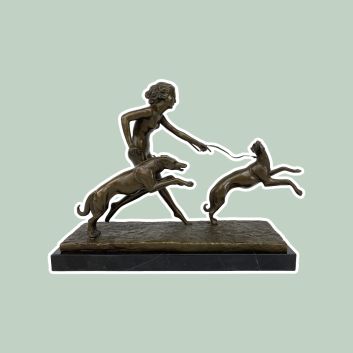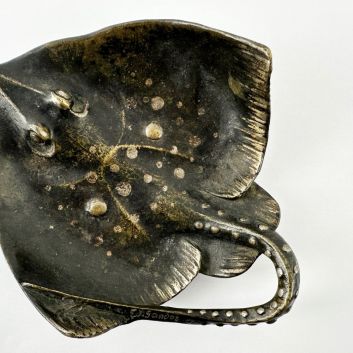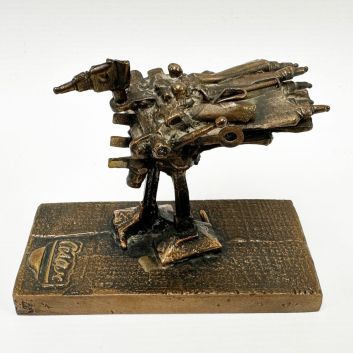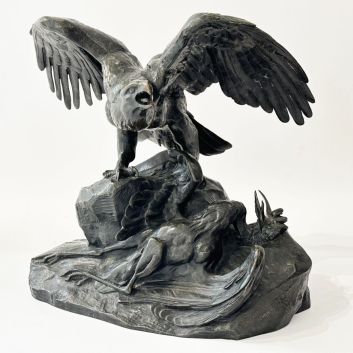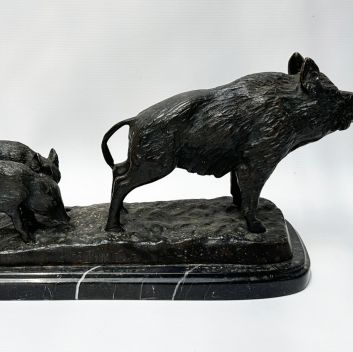Rating and value of sculptures, ceramics and bronzes by Armand Petersen

If you own a work by or after Armand Petersen, and would like to know its value, our state-approved experts and auctioneers will be happy to offer you their appraisal services.
Our specialists will carry out a free appraisal of your work, and provide you with a precise estimate of its value on today's market. Then, if you wish to sell your work, we'll guide you towards the best possible means of obtaining the best possible price.
Rating and value of works by Armand Petersen
Armand Petersen produced one-of-a-kind sculptures. Now, prices for these creations can rise considerably under the auctioneer's hammer. His sculptures are particularly prized by buyers from all over the world.
The price at which they are selling on the art market ranges from €100 to €60,000, at the moment, a substantial gap but one that says a lot about the value that can be attributed to Petersen's works. In 2023, his bronze sculpture Le Lama sold for €60,000, originally estimated at €50,000 to €70,000.
Order of value from a simple work to the most prestigious
Technique used | Results |
|---|---|
Ceramics | From €100 to €2,970 |
Bronze | From €915 to €60,000 |
Response in less than 24h
Style and technique of artist Armand Petersen
Armand Petersen is a contemporary sculptor who works mainly in bronze. The sculptures that sell on the auction market are therefore mainly bronzes, but he has also produced works in ceramics - particularly porcelain.
His work is close to that of artists such as Édouard Marcel Sandoz, Georges Lucien Guyotand Albéric Collin.
Armand Petersen's career
Armand Petersen (1891-1969), of Danish origin, was born in Basel, Switzerland. He began his career at the École d'Arts Industriels in Geneva, where he studied goldsmithing and chasing.
In 1914, he moved to Paris to continue his training, but it was in the studio of the Hungarian sculptor Bêla Markup that he finally spent four years familiarizing himself with modeling.
Markup, a specialist in animal sculpture, introduced him to the animals at Budapest Zoo.
In 1924, animal art was booming. Pompon, famous since his Ours Blanc presented at the Salon d'Automne in 1922, gathered around him at the Jardin des Plantes a new generation of animal artists, who studied animals under his guidance.
In 1926, Petersen took his turn in animal art, working at the fauverie at the Jardin des Plantes, joining Pompon's circle of disciples.
The first exhibition of the "Animaliers" took place in 1927 at the Brandt gallery, where Petersen exhibited alongside Sandoz, Bigot, Artus and Pompon.
His talent did not go unnoticed. At the same time, the Manufacture de Sèvres, looking for contemporary works to adapt in colored soft stoneware, chose three Petersen sculptures.
Unlike Pompon's creations, which embody "bêtes du Bon Dieu", Petersen's creations exude a constant vigilance, a subtle expression that distinguishes him as a master of animal sculpture.
By 1929, only two years after his debut, he was already recognized as one of the best of his generation, often cited just after Pompon.
In 1931, the "Douze Animaliers Français" group was formed, and although Petersen was Swiss, he took part as a guest.
The economic crisis of 1932 forced many artists, including Petersen, to produce more ceramic editions to support themselves, notably at the Manufacture de Sèvres and Bing & Grøndahl in Copenhagen.
After Pompon's death in 1933, the group quickly dissolved. However, thanks to Sandoz, who took over the Brandt gallery, they continued to meet until 1939, when the war finally dispersed them.
In 1935, Petersen obtained French nationality, while continuing to exhibit regularly in Switzerland.
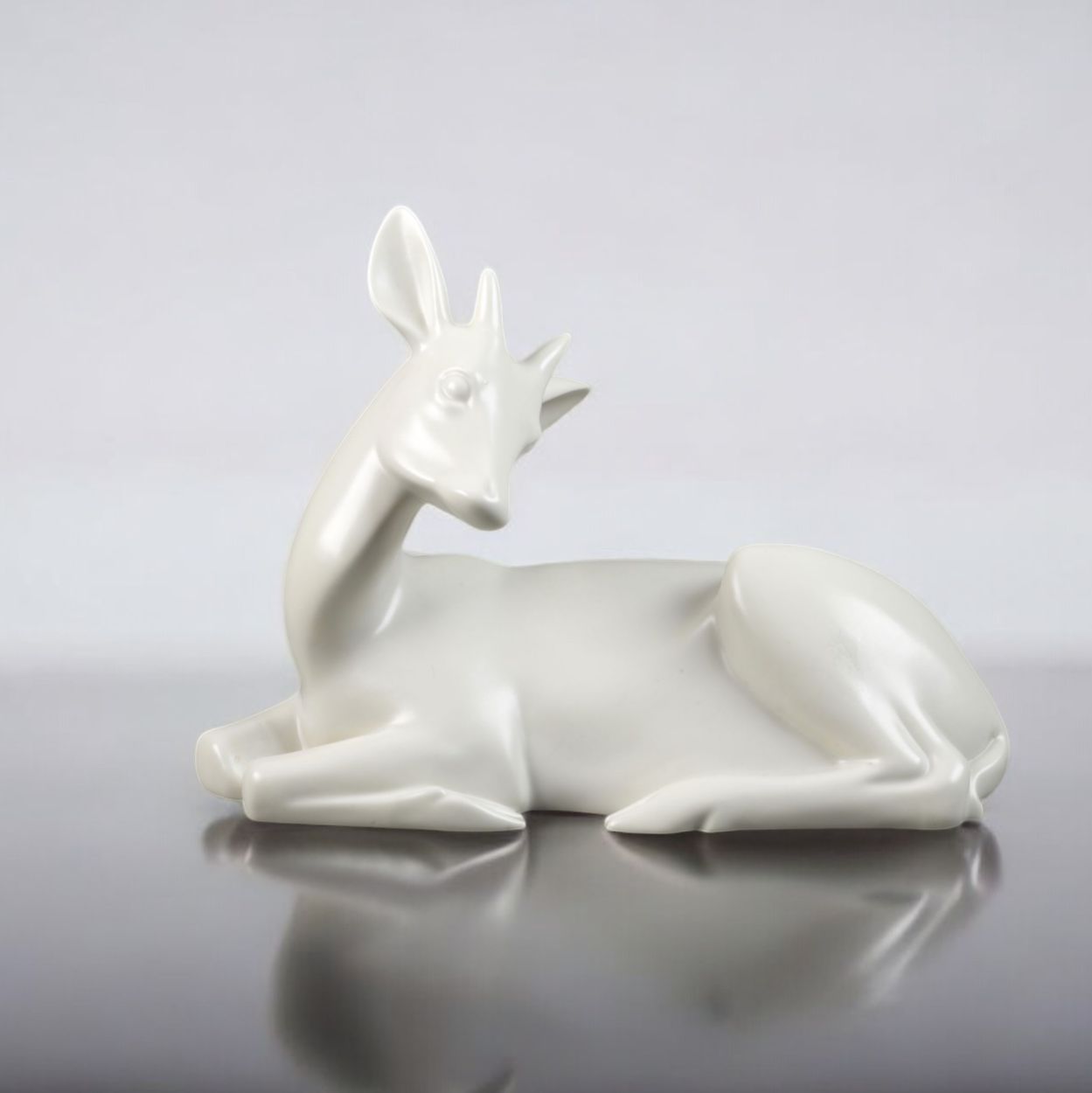
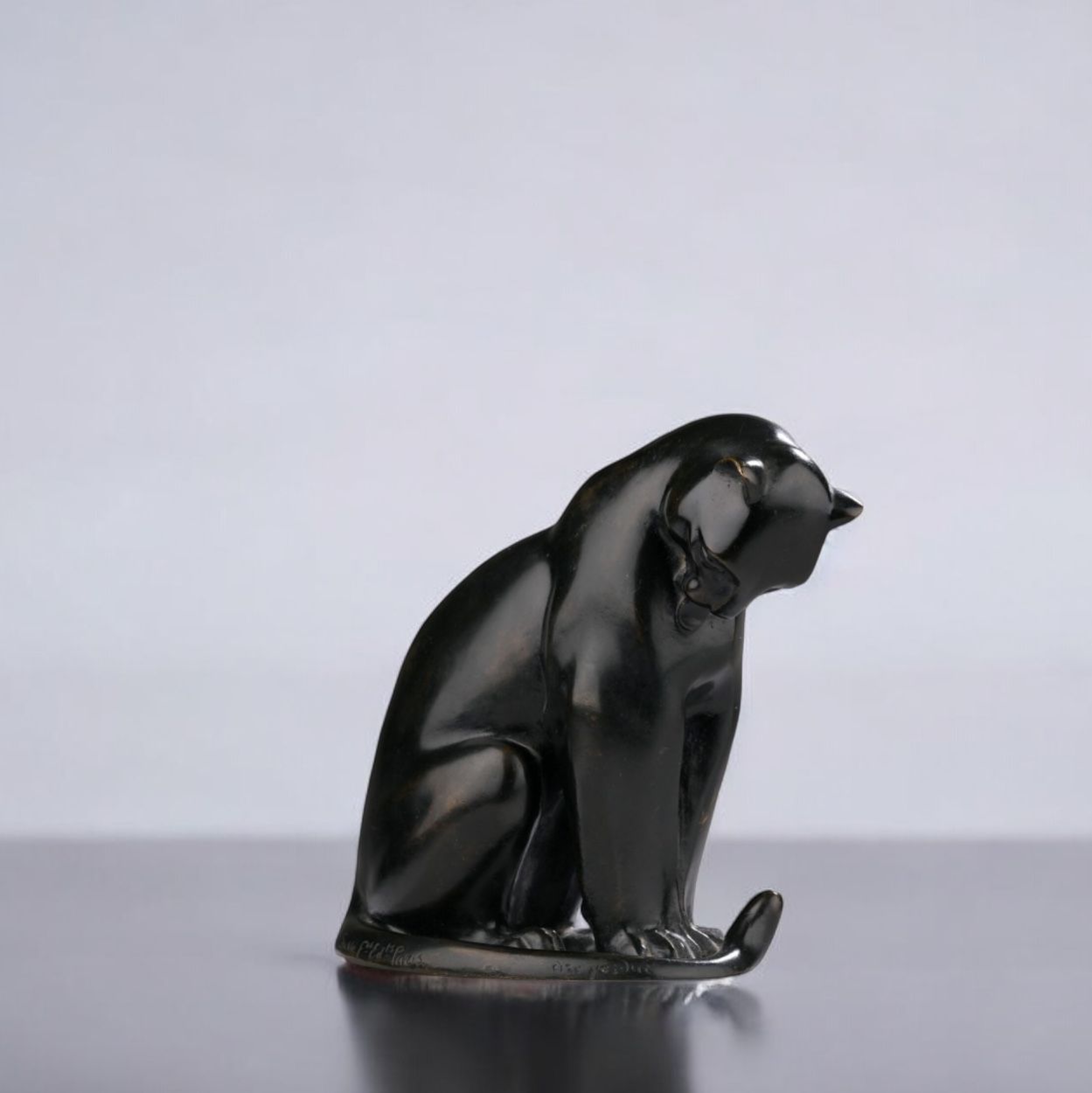
Animal sculpture in the 20th century
Twentieth-century animal sculpture embodies a veritable renaissance in art, reinterpreting the age-old bond between man and animal.
At a time when the industrial era is in full swing and the modern world is accelerating, wildlife artists find an inexhaustible source of inspiration in nature and its creatures, which they seek to represent with a new sensibility.
This artistic genre, often marginalized, is enjoying a resurgence in popularity thanks to visionary sculptors who succeed in capturing the essence of animals with remarkable depth and expressiveness.
In the early 20th century, animal sculpture was reinvented by sculptors such as François Pompon, whose works simplified forms without sacrificing the essence of the animal.
Pompon, a former practitioner of Rodin, turned away from the hyper-realist approach in favor of clean lines and smooth volumes, seeking to capture the essence of the creatures he sculpted.
His Ours Blanc, shown at the Salon d'Automne in 1922, became a symbol of this new style. With its soft contours and almost minimalist look, it inspired a whole generation of animal artists who sought to express animal life with an economy of formal means, without losing sight of the intrinsic energy of the subject.
Alongside Pompon, sculptors such as Rembrandt Bugatti displayed a striking realism, but with their own personal touch. Bugatti, often associated with his sculptures of wild beasts and elephants, spent long hours observing animals in zoos, notably in Antwerp.
His works, imbued with an acute sensitivity, reflect not only the morphology of the animals, but also their character and behavior, capturing moments of tension, rest or social interaction.
The raw texture of his sculptures, often left visible, bears witness to his intense, direct creative process.
In the 1920s and 1930s, animal sculpture enjoyed a veritable golden age in Europe. In France, alongside Pompon, artists such as Paul Jouve, Édouard-Marcel Sandoz and Armand Petersen stood out for their ability to capture the soul of animals.
Jouve, for example, excelled in his depictions of big cats and birds, combining anatomical precision with expressiveness.
Sandoz, meanwhile, is interested not only in exotic animals but also in domestic species, which he interprets with particular sensitivity. Swiss-born Petersen brings a touch of concern and vigilance to his work, setting his creations apart from those of his contemporaries.
At the same time, the Art Deco movement, which dominated the period between the wars, also influenced animal sculpture. Geometric shapes, clean lines and luxurious materials such as bronze and ivory were favored, giving sculptures a modern yet refined appearance.
Animals become stylized motifs, integrated into architectural or decorative compositions, reinforcing the idea that animal art can also be a decorative art.
The Second World War marked a break, but the post-war period saw animal sculpture reinvented once again.
Artists of this period, influenced by abstraction and existentialism, explored new ways of representing the animal world.
The forms sometimes become more stylized, the materials more varied, but the interest in fauna persists, once again underlining the indefectible link between mankind and nature.
In the 20th century, animal sculpture has evolved to reflect the concerns of its time, from the purity of form to the expressiveness of volume, while remaining deeply attached to the beauty and diversity of the animal world.
Each artist has contributed his or her own vision, enriching this artistic genre with a diversity of approaches that continues to inspire and fascinate.
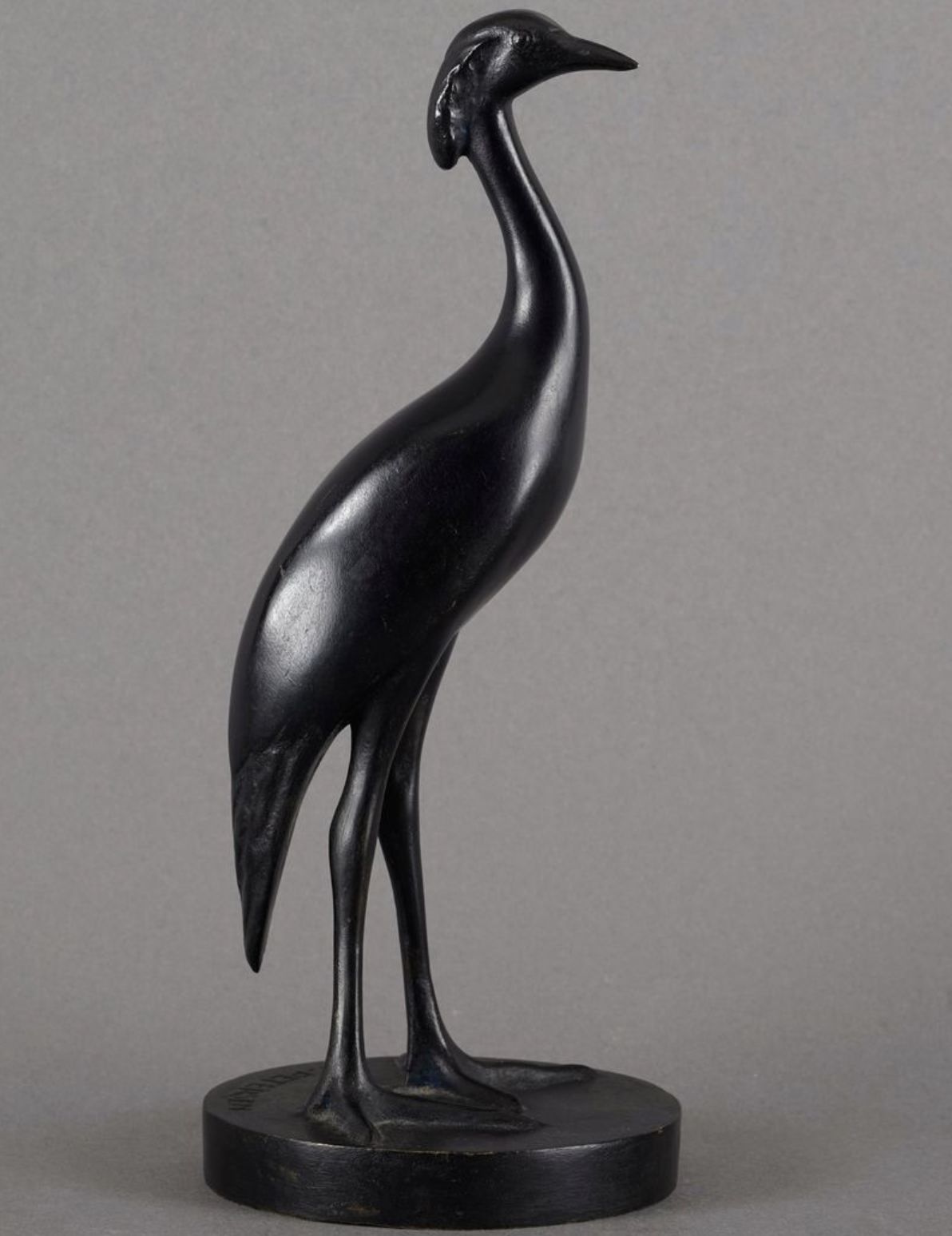
Focus on the hippopotamus at the Manufacture de Sèvres
The hippopotamus that Armand Petersen created for the Manufacture de Sèvres is a work that perfectly embodies his unique approach to animal sculpture.
At first glance, this imposing animal seems solidly anchored to the ground. But beyond this appearance, Petersen infuses his creation with a subtle tension, an almost palpable vigilance, that transforms this sculpture into much more than a simple naturalistic representation.
Petersen, true to his style, avoids superfluous frills. The shapes are pure, the lines softened, creating a silhouette that is both robust and fluid.
This economy of means is at the service of expression: the hippopotamus, despite its heaviness, exudes a sense of vigilant calm, as if ready to move at any moment, with that calculated slowness typical of the species.
This stylistic choice reflects Petersen's interest in the essence of his subjects, which he manages to capture without resorting to an overabundance of detail.
The material chosen by the Manufacture de Sèvres, a soft stoneware colored in deep hues, adds an extra dimension to the work.
With its soft texture and satin finish, stoneware gives the animal a slightly moiré, almost watery appearance, evoking the hippopotamus's natural habitat, the rivers and swamps where it spends most of its time.
This smooth, almost sensual surface invites caressing, creating a tactile interaction with the observer that contrasts with the often ferocious image of this animal.
The expression on the hippo's face is another striking detail. Rather than presenting a simple mask of bestiality, Petersen endows his subject with an almost meditative expression. The half-closed gaze is enigmatic, evoking both an inner placidity and a discreet attention to its surroundings. This duality of expression adds a psychological depth to the sculpture that sets it apart from more classical representations.
Finally, the work testifies to Petersen's ability to adapt to the technical and aesthetic demands of the Manufacture de Sèvres while retaining his distinctive style. He manages to combine the finesse and modernity of the design with a fidelity to the nature of the animal, making this sculpture a masterpiece of the twentieth-century revival of animal ceramics.
The work perfectly illustrates Petersen's ability to transform a familiar subject into a creation that is both modern and timeless, marking a milestone in the evolution of the century's animal art.
The success of Armand Petersen's sculptures
Armand Petersen produces exceptional pieces, whose shapes and motifs evolve over the course of his career. He is now a highly regarded and renowned artist.
His works are rarely sold at auction, but are very much in demand.
Recognizing Armand Petersen's signature
Armand Petersen doesn't always sign his works. If you think you own one, it's best to have it appraised.

Knowing the value of a work
If you happen to own one of Armand Petersen's creations, or if you think you might have one, don't hesitate to ask for a free estimate using the form on our website.
A member of our team of experts and certified auctioneers will contact you promptly to provide you with an estimate of the market value of your piece, as well as any relevant information about it.
If you want to sell your property, our specialists will also help you find alternatives to sell it at the best possible price, taking into account market trends.
Response in less than 24h
Related topics
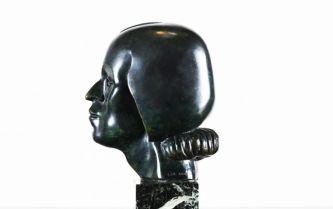
Rating and value of Amedeo Modigliani's works
Amedeo Modigliani is a 20th-century painter, draughtsman and sculptor. The value of his works may surprise you!
Read more >
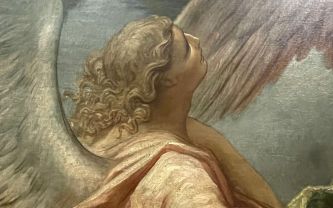
Rating and value of paintings, drawings and engravings by Gustave D...
Gustave Doré was a 19th-century Romantic illustrator, painter and engraver. His works are highly valued at auction.
Read more >
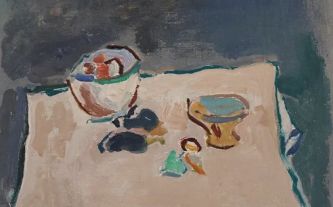
Rating and value of paintings by Marko Cel...
Marko Celebonovik is a Serbian figurative painter who has produced many works that are highly rated and valued at auction.
Read more >
Secure site, anonymity preserved
State-approved auctioneer and expert
Free, certified estimates
